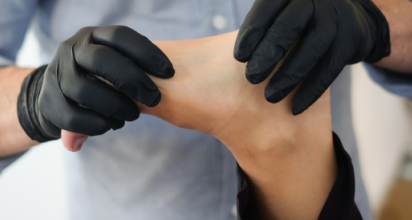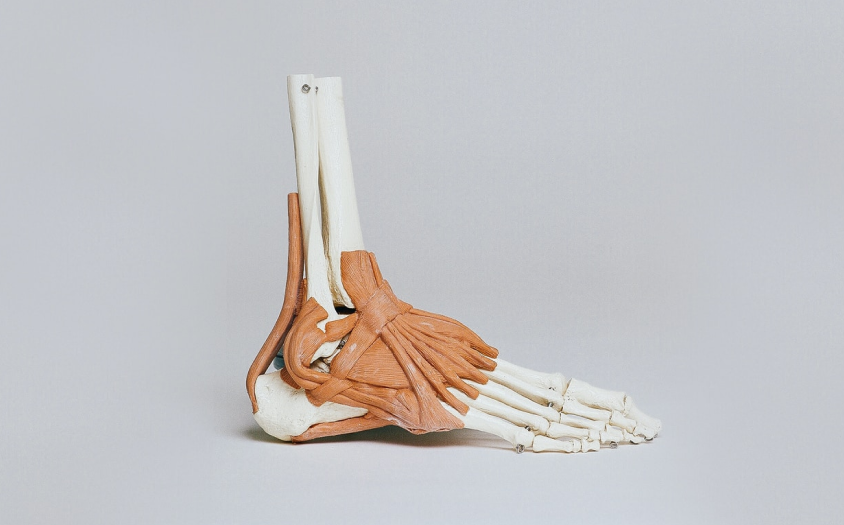
The regional Section of the Pan-Hellenic Physiotherapists Association in Chios, Lesvos & Samos and the Scientific Department of Sports Physiotherapy inform you in regard the most common injuries that may occur during your preparation or participation to the Half Marathon. The most common injuries that appears in lower extremity along with tips in how to prevent them are presented below.
Anterior patellofemoral pain
A few words: It manifests with pain in the anterior surface of the knee behind and around the kneecap. The causes may be anatomical, muscle weakness or imbalance leading to misalignment of the patella and incorrect load distribution or fatigue of the joint from the constant flexion extension movement. On downhill terrain the symptom may worsen. It is more likely to occur in women mainly due to anatomical differences compared to men.
Prevention
Do not change training surfaces abruptly and avoid very hard ones.
Do not increase your running distances by more than 10% weekly.
Make sure you wear appropriate shoes. Improve neuromuscular coordination in the knee. Make sure the hamstrings and calf muscles have normal elasticity(see the Pan-Hellenic physiotherapy association handout with instructions for participants – hamstring stretches, gastrocnemius-infratibialis stretches)
Plantar fasciitis - aponeuropathy
A few words: The plantar aponeurosis is a band of dense connective tissue which is located on the sole and under tension forms the arch of the foot. Pain can be caused by excessive loads placed on the foot and avulsion due to shoes that do not support the arch and heel, when clubfoot or flat feet are present, as well as increased stress on the Achilles tendon. It manifests itself with pain mainly in the area of the inner side of the heel.
Prevention
Your shoes should properly support the arch and heel. If you have any discomfort, avoid walking or running without shoes or in shoes without extra absorption (with flat soles).
Always prefer absorbent shoes in training and lighter and supportive ones in the race. Keep both the calf and toe muscles in normal elasticity (see the Pan-Hellenic physiotherapy association handout with instructions for participants – gastrocnemius-infratibialis stretches) and add plantar aponeurosis stretches to your program by “pulling” the big toe first toe and then your remaining 4 toes backwards.
You can "massage" frequently to keep the plantar aneurism from "tightening" by using a tennis ball placed under your foot and moving it in different directions in a sitting position using the weight of your foot.
Fatigue fracture
A few words: Such a fracture in runners usually occurs in the tibia (cane), the second metatarsal and the scaphoid bone of the foot. Anatomical factors, such as flat feet, may be to blame. Previous history of Fatigue fracture and female gender appear to
be the main aggravating factors. Sudden increases in training load and sudden changes in the exercise surface appear to play a role in fracture occurrence.
Athletes with menstruation or with an abnormal cycle seem to have more frequent such fractures, although research data is controversial.
Prevention:
Do not make sudden changes in training volume and intensity.
Wear appropriate shoes for each exercise surface.
Make sure you have proper muscle strength and flexibility.
Allow adequate rest time between your workouts



The regional Section of the Pan-Hellenic Physiotherapists Association in Chios, Lesvos & Samos and the Scientific Department of Sports Physiotherapy inform you in regard the most common injuries that may occur during your preparation or participation to the Half Marathon. The most common injuries that appears in lower extremity along with tips in how to prevent them are presented below.
Iliotibial band friction (compression) syndrome
A few words: The syndrome is caused by the repeated flexion- extension movement of the knee and is manifested by pain on the outer surface. Occurs due to excessive training volume, worn or inappropriate footwear, or due to prolonged training on uneven playing ground. Other causes may be weakness of the gluteus medius, the major hip flexors (mainly the iliopsoas), and/or the gluteus maximus.
Prevention:
Do not suddenly increase training volume and/or intensity. An increase of up to 10% per week is allowed to avoid excessive demands on your webs.
Avoid prolonged training on uneven or hard surfaces.
Make sure to maintain good muscle control in the pelvis, hip and knee area by exercising the muscle groups symmetrically.
Consult your physical therapist about massaging the area, appropriate stretches, and evaluating any biomechanical issues.
